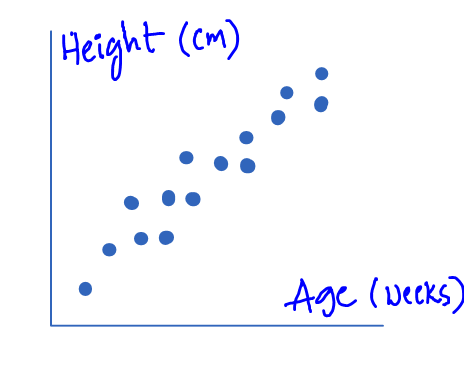
Machine learning algorithms for Healthcare industry
As per the changing technology, AI has been in to many sectors. One of them is Health care sector, where human physicians can be replaced by AI. By improving technology there is more scope of innovations in the field of health care department. Where the treatment is designed in such a way that the individual feels lesser pain and more comfort. Hence risk assessment plays a major role in the Field of AI.
- AI helps the physician to provide up to date medical information through journals, textbooks for proper patient care…
- AI can extract a large amount of patient data for overcoming health risk alerts and health outcome prediction.
- AI can continuously perform tasks like X-ray, CT Scans or data entry.
- Humans in practice can do the errors whereas AI reduces diagnostic and therapeutic errors.
- Medical records and performance of an individual can be managed by AI.
- According to the disease, AI can develop exact medicine or drugs that improve individual health.
- Now-a-days Digital consultation and health monitoring services helps the individuals as well as their precisions time.
- Basically there are many applications of Ai in the field of health care, but, there are two major categories that are involved in health care services such as,
-Analysis of structured data (images, genes and biomarkers)
-Analysis of unstructured data (notes, medical journals or patients)
Whereas the former approach is delta with Machine Learning and Deep Learning Algorithms, while the latter rest on the specialized Natural Language Processing practices.
Machine learning algorithms:
Machine learning deals with the data of patients “traits” and medical outcomes. Previously it was dominated by logistic regression where it classifies things. As per the changing trends SVM and neural networks, NLP, Naïve Bayes, TF-IDF, word vectors.
Support Vector Machines:
Support Vector Machine is one type of supervised Machine Learning algorithm and it is widely used in classification problems especially multi-class classification.
The main objective of the support vector machines is to find the hyperplane in N-dimensional space that distinctly classifies the datapoints.
For more information we would recommend you read about top most machine learning algorithms
Neural Network Layers:
“Neural network is a network or circuit of neurons, composed of artificial neurons or nodes.” A Neural Network in case of Artificial Neurons is called Artificial Neural Network, can also be called as Simulated Neural Network. Artificial neural network is a network which can solve Artificial intelligence problems. Neural Networks are Decision Making Tools, which can be used to model complex relationships between input and output. Types of Neural Networks: Feed Forward Neural Network Radial Basis Function Neural Network Kohonen Self Organizing Neural Network Recurrent Neural Network Convolution Neural Network Modular Neural.
For more information we would recommend you read about Hidden layers in neural networks
Logistic Regression:
Logistic regression is used when the outcome is binary [yes/no, true/false, 0/1]. And also used in find the probability of an event is success or failure. Here the outcome values are represented in 0 to 1 by following equation.
It’s mainly used in classification problems. It can handle any type of relationships here there is no need to follow the relationship between dependent and independent variables.in this the independent variables are independent with each other so in this there is no multi co-linearity and the dependent variable is ordinal it is called as ordinal logistic regression and the dependent variable is multi class then it is called multinomial logistic regression.
For more information we would recommend you read about types of regression techniques.
Natural language processing:
Natural language processing it is an automatic manipulation of natural languages like speech, text. As mentioned earlier, the machine is used to convert the natural language into mathematical form. Below are the some methods under the natural language processing.
tf_idf:
The tf-idf is used to score the vocabulary and provide a weights to a words in proportion of the impact it has on the meaning of sentence and simply it’s a product of two independent scores I.e. term frequency and inverse document frequency.
For more information we would recommend you read about basics of natural language processing.
Naive Bayes:
The Naïve Bayes algorithm is mainly based on Bayes theorem and the assumption is there is no dependency between the predictors which means each and every input variable is independent .This assumption is very effective on large range of complex problems.
It is used to find the conditional probability, which means it’s a probability of an event occur it has some relationship to one or more events.it is mainly dealing with the probability distributions of the variables to predict the probability of target variable belonging to particular value.
For more information we would recommend you read about top most machine learning algorithms.
Word2Vec:
The word2vec is a latest model to manage all the words in vocabulary and find the high signal words so we can encounter words that we have not seen our training set before. The previous method will not able to classify those tweets. For this we can go to the semantic meaning of words is used to understand that words like “positive” and “good” are very much closer to “continent” and “apricot”. This is called word2vec.
Deep learning:
Deep learning models are very high complicated, high dimensional, large data and number of hidden layers for this the activation function makes sense between the input and output signals. The one more important feature of activation function is it should be differential which we used in back propagation optimization techniques that will compute the loss with respect to the Weights and biases.
Convolutional Neural Network:
Convolutional Networks are similar to that of Feed Forward Neural Network where the Perceptron have learnable Weights and Bias. Computer Vision techniques are dominated with Convolutional Neural Network because of its accuracy in Image Classifications.
In this, Input features are taken in batch wise like filter. This will help the Network to remember the parts of Images while computing the operations. These computations involve in the operation of conversion of RBG scale, HSI scale to Gray scale.
Its application has been Signal and Image Processing which takes over Open CV in field of Computer Vision.
Recurrent Neural Network:
Recurrent Neural networks feed the Output of the layer to Input in order to predict the Outcome of the layer. In this Neural Network, Feedback Lops is possible. Recurrent Neural Networks are having been less influential when compared to Feed Forward Neural Networks.
In the future, we can simulate a series of clinical medical problems through ‘digital patients’ and make better clinical decisions by analyzing big data, but in the end, only real patients need us to pay attention to them.” Wacht Say. In contrast to China, it is also explored at the same stage. The presentation of the “holographic digital person” for comprehensive nutrition and health at the national level is also a manifestation of the consistency of the future direction of medical informationization.



